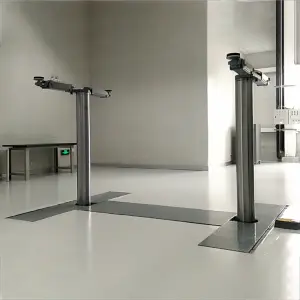
The Wonders of a Cylinder: A Geometric Marvel That Powers Everyday Life
Cylinders may seem like a common and straightforward shape, but their practical applications are nothing short of extraordinary. From the engines that power our vehicles to the cans that store our favorite beverages, cylinders play a crucial role in numerous aspects of our daily lives. To truly appreciate the marvels of this geometric shape, let’s delve deeper into its properties and explore its diverse uses.

The Wonders of a Cylinder: A Geometric Marvel That Powers Everyday Life
A cylinder is a three-dimensional solid that consists of two congruent circular bases connected by a curved surface. The bases are parallel, and the vertical distance between them is called the height. This simple but versatile shape holds a multitude of secrets, making it valuable in various technological and industrial fields.

The Wonders of a Cylinder: A Geometric Marvel That Powers Everyday Life
One of the most important applications of cylinders is in the realm of engineering, particularly in the design of internal combustion engines. These engines make use of cylindrical pistons that move up and down within cylindrical chambers, creating the mechanical energy required to power automobiles. The smooth circular shape of the cylinder aids in the efficient movement of the piston, reducing friction and maximizing power generation.
Beyond the automotive world, cylinders also find their place in the construction industry. Concrete pillars, water storage tanks, and pipelines are often cylindrical in shape due to their structural stability and functionality. The curve of the cylinder’s surface helps distribute the weight evenly, making it an ideal choice for supporting heavy loads and withstanding external forces.
Not only limited to mechanical and structural applications, cylinders also feature prominently in the packaging industry. Aluminum and steel cans, widely used for storing beverages, are essentially cylindrical in shape. This form is not only easy to fabricate but also convenient to store and transport due to its stackable nature. The cylindrical design of these containers optimizes efficiency, allowing companies to pack and distribute products more effectively.
Furthermore, cylinders have left their mark in the world of mathematics and geometry. The measurement of the curved surface area and the volume of a cylinder is a fundamental concept taught in schools worldwide. Understanding these calculations helps students comprehend the principles of geometry and develop problem-solving skills. Moreover, cylinders serve as a gateway to more complex geometric shapes, such as cones and spheres, by showcasing the similarities and relationships among them.
In the field of medicine, the concept of cylinders is vital as well. Oxygen tanks, ubiquitous in hospitals and emergency situations, typically take the shape of cylinders. These life-saving devices store and deliver a steady supply of oxygen to patients, offering them a chance to recover and heal. The cylindrical design ensures the maximum amount of oxygen can be stored within the tank while maintaining portability and ease of use.
The wonders of cylinders extend beyond their immediate applications and into the realm of art and design. Architects often use cylindrical shapes to create visually stunning structures, incorporating them into the design of skyscrapers, stadiums, and museums. Moreover, artists and sculptors have celebrated the elegance and symmetry of cylinders throughout history, using their form as an inspiration for various artistic creations.
It is clear that the cylinder, with its simplicity and versatility, has imprinted its mark on numerous aspects of our lives. Its diverse applications, from engines to packaging, make it an integral part of our modern world. The next time you hold a can, drive a car, or witness a towering skyscraper, take a moment to appreciate the wonders of the humble cylinder that lies at the heart of these marvels.Inground lift
